The construction and the extension of the airport had a great impact on the landscape and for the residents of the bordering localities. To attenuate the negative impacts one tried systematically to surround the site of the airport with a wide forest screen. This forest, in the horseshoe shape, surrounds the track of takeoff. The existing forests were integrated in the forests of protection. The breaches between the existing forests were closed by plantations of new forests.
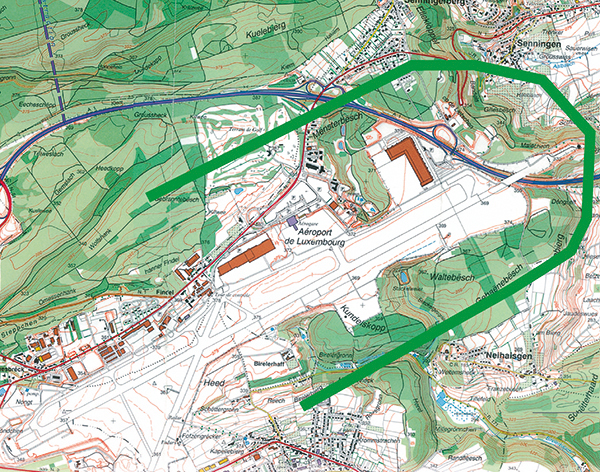
The forest screen in the horseshoe shape surrounds the airport.
To reinforce the screen effect compared to the airport and the highway embankments were arranged at the side of the localities of Senningen and Senningerberg. Those were also planted.
Functions of the Forest Screen
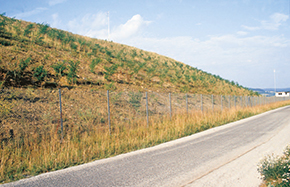 |
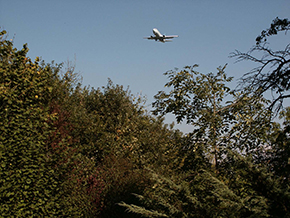 |
The embankment next to Senningen at the beginning of the plantations and today
The forest screen around the airport fills multiple functions of which most important are to ensure a protection against noise pollutions as well as a visual protection but also the integration of the airport in the landscape. It also contributes to the improvement of the climate of the neighborhoods of the city. The transformation of agricultural surfaces into forests involves positive effects for protection of the grounds and water. The site of the airport is in the Sandstone of Luxembourg, the most important drinking water reservoir of the country. The forest avoids evaporation and supports the infiltration of precipitations in the ground.
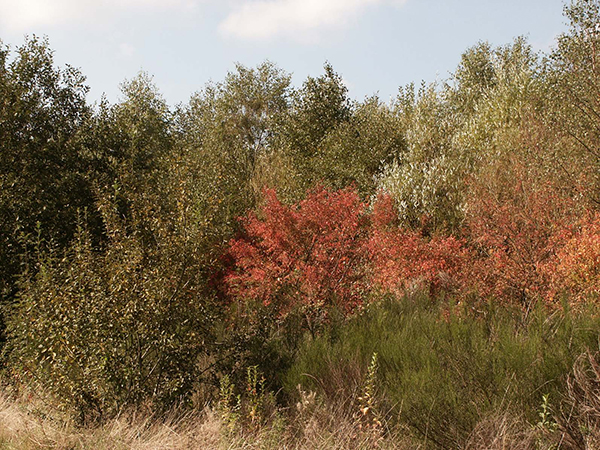
Existing forest and new cultivations complement each other. The plantations consisted of robinier false acacia, pine, white poplar or trembling poplar, all the species of trees which grow well on arid embankments.
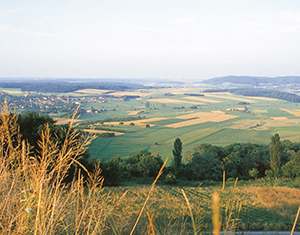 View of the eastern end of the airport eastward to the “Bloebierg”. Beginning of the eighties there was still another view into the landscape. Today the view is barred by the protection forest.
View of the eastern end of the airport eastward to the “Bloebierg”. Beginning of the eighties there was still another view into the landscape. Today the view is barred by the protection forest.
